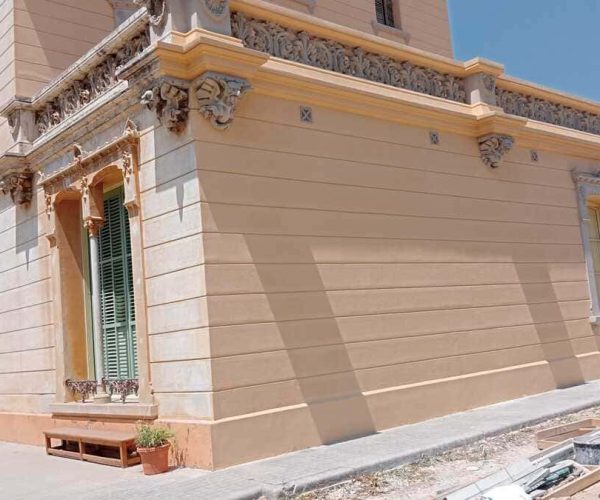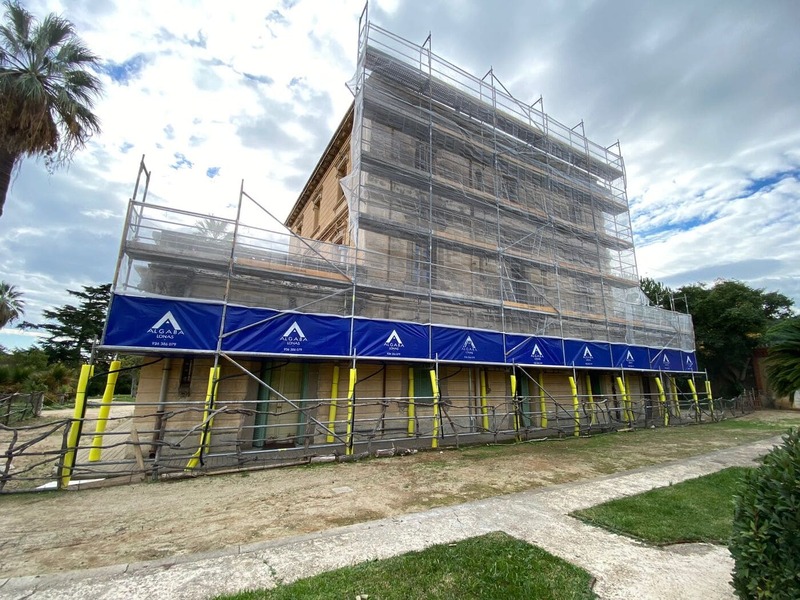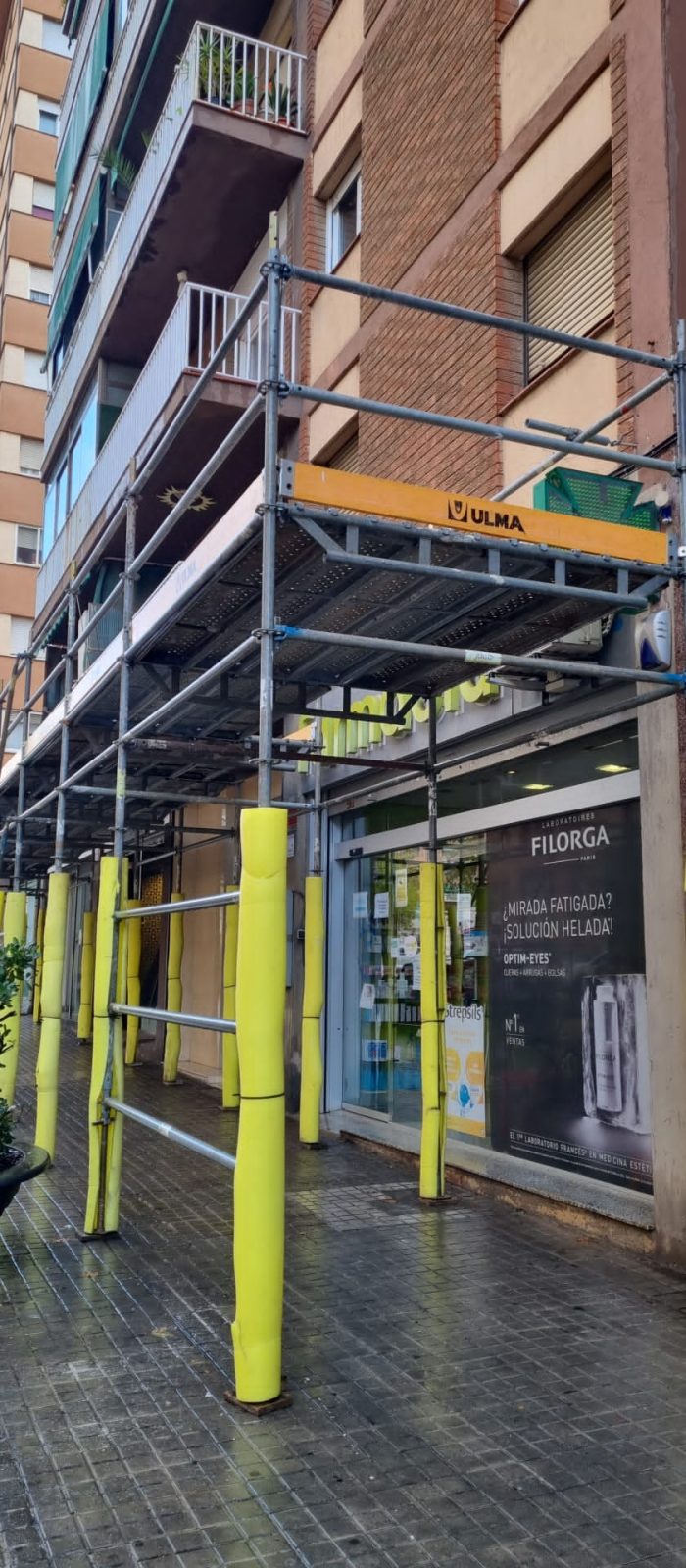Renovation in Barcelona: Transforming spaces with ReproBarcelona
If you are looking for a specialist renovation company in Barcelona that combines experience, quality and a personalised approach, you have come to the right place. At ReproBarcelona, we are experts in luxury renovation, providing our clients with exclusive solutions to renovate and restore their properties, preserving the original essence while modernising every detail. Whether you want to rehabilitate an old building or a home that needs a complete transformation, we are here to help you turn your space into something extraordinary.

What is luxury rehabilitation?
Luxury refurbishment goes beyond a simple renovation. It is about respecting the original architecture of the building or home, while improving its functionality, aesthetics and comfort. This type of project ranges from the restoration of historic facades to the modernization of interiors with high-end materials and advanced technologies. At ReproBarcelona, we focus on every detail to create unique spaces that combine classic charm with modern comforts.
Why undergo a rehabilitation in Barcelona?
Barcelona is a city full of history, where many old buildings and homes have great architectural value. However, the passage of time can mean that these properties need updating both in terms of aesthetics and functionality. Below, we explain the main reasons to consider a renovation in Barcelona:
Preservation of architectural heritage
Barcelona is famous for its unique architecture, ranging from modernist style to historic buildings from centuries past. By renovating your property, you are preserving and enhancing the historical and cultural value of your property, contributing to the conservation of the city's heritage. At ReproBarcelona, we are specialists in respecting the original details of each building while adapting it to current needs.
Improving energy efficiency
A renovation not only improves the aesthetics and structure of a property, but also offers the opportunity to make it more energy efficient. Installing modern insulation systems, high-performance windows, efficient heating and renewable energy can significantly reduce energy costs and improve comfort. This is a key aspect in any luxury renovation we carry out at ReproBarcelona.
Property revaluation
A properly renovated property can significantly increase its value on the real estate market. By renovating a home or building with high-quality materials, updating the facilities and improving the design, you not only achieve a more habitable space, but also a more attractive investment for potential buyers or tenants.
Contact us to start your rehabilitation in Barcelona
If you are thinking about doing a renovation in Barcelona, ReproBarcelona is your best option. From initial planning to final delivery, we take care of every aspect of the project so that you get the space you have always wanted. Contact us today to start your luxury renovation.
Our rehabilitation process at ReproBarcelona
At ReproBarcelona, we follow a structured process that guarantees the quality and success of each renovation project. Below, we explain the key phases of our process:
Initial consultation and evaluation
It all starts with an initial consultation, where we analyse the current state of the property and discuss your expectations and needs. During this phase:
- We carry out a detailed inspection of the building or home to identify possible structural, installation or design problems.
- We define the project objectives, whether it is to restore historical elements, improve the layout or modernize the facilities.
- We establish a realistic budget and schedule, adjusted to the specific needs of the rehabilitation.
Design and planning
Once we have defined the objectives, our team of architects and designers develops a customized plan that includes:
- 3D plans and visualizations, which allow you to see what your property will look like after the renovation.
- Selection of high quality materials, adapted to the style and functionality you want for your property.
- Proposals for layout and design that maximize the use of space and improve the aesthetics of the property.
Execution of the work
With the design approved, we begin the execution of the rehabilitation, supervised by a team of construction and restoration experts. During this phase:
- We coordinate suppliers and contractors to ensure that materials arrive on time and work is completed as planned.
- We supervise each stage of the project, ensuring that deadlines are met and everything is executed with the utmost precision.
- We maintain constant communication with you, so that you are informed about progress and any necessary adjustments.
Final review and delivery
Before final delivery, we carry out a thorough inspection to ensure that everything is in perfect condition and meets your expectations. We make sure that every detail, from the finishes to the installations, is impeccable. Only when you are completely satisfied with the result, we consider the project as completed.
Luxury renovation projects with ReproBarcelona
At ReproBarcelona, each renovation project is tailored to the unique characteristics and needs of the property. We specialise in luxury renovations, working on all types of buildings, from apartments in historic buildings to single-family homes on the outskirts of Barcelona.
Rehabilitation of historic buildings
Rehabilitating historic buildings requires a specialized approach, respecting the original elements and ensuring that modern interventions are harmonious. At ReproBarcelona, we take care of restoring facades, improving the structure and updating the facilities, while maintaining the unique character of each building.
Rehabilitation of single-family homes
In single-family homes, we focus on improving both the aesthetics and functionality of each space. From enlarging rooms to modernizing kitchens and bathrooms, our goal is to turn your home into a luxury home that combines comfort and design.
Why choose ReproBarcelona for your renovation project?
Choosing ReproBarcelona for your renovation project in Barcelona means having a team of dedicated professionals who specialize in creating unique and personalized spaces. By choosing us, you will enjoy:
- Experience in luxury renovations: We know the best techniques and materials to restore and modernize any type of property.
- Custom design: Each project is unique, adapted to your needs and lifestyle.
- Quality guaranteed: We only use high-end materials and have a highly qualified team.












